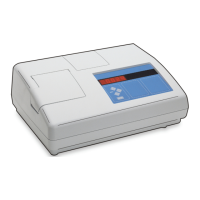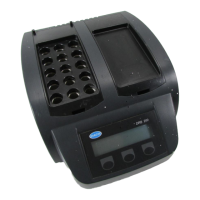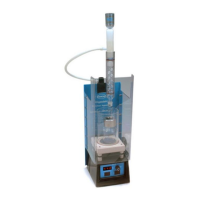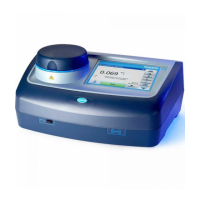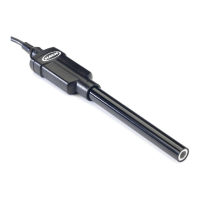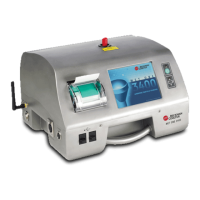• Use only the provided silicone oil. This silicone oil has the same
refractive index as the vial glass and masks minor glass differences
and scratches.
• Store the oiling cloth in a plastic storage bag to keep the cloth clean.
• If power is lost during calibration, the new calibration data is lost and
the last calibration data is used. To exit a calibration and not save the
new values, push UNITS/Exit.
• In Calibration mode, automatic range and signal averaging on are
selected. When calibration is completed, all operational modes go
back to the last settings.
• All nephelometric (turbidity units of measure) calibrations are done at
the same time.
• Ratio-on and Ratio-off calibration data is measured and recorded at
the same time.
• The 7500-NTU standard does not have to be measured during
calibration if turbidity less than 4000 NTU will be measured. Push
CAL/Zero after the 4000 NTU standard is measured to complete the
calibration procedure.
• Clean the USEPA filter assembly before doing a primary calibration,
or at least every 3 months (which is the USEPA-recommended
primary calibration interval).
Formazin calibration procedure
For the best accuracy, use four matched sample cells or the same sample cell for all measurements during calibration. Refer to Matching sample cells
on page 22.
1. Remove the filter
assembly. Refer to
Change the filter
assembly on page 50.
2. Clean and inspect
the lens of the USEPA
filter assembly. Refer to
Clean the filter
assembly on page 50.
3. Hold the tab of the
USEPA filter assembly
so that the arrows point
toward the front of the
instrument. Push the
filter assembly fully into
the housing.
4. Push CAL/Zero.
The CAL/Zero light
turns on, and the mode
display shows "00" .
The NTU value of the
dilution water used in
the previous calibration
is shown.
5. Rinse a clean
sample cell two times
with dilution water. Fill
the sample cell to the
line (about 30 mL) with
dilution water and
immediately put the cap
on the sample cell. Use
the same dilution water
that was used to
prepare the formazin
standards.
6. Clean the sample
cell with a soft, lint-free
cloth to remove water
spots and fingerprints.
Do not invert the
sample cell.
44 English
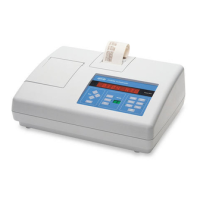
